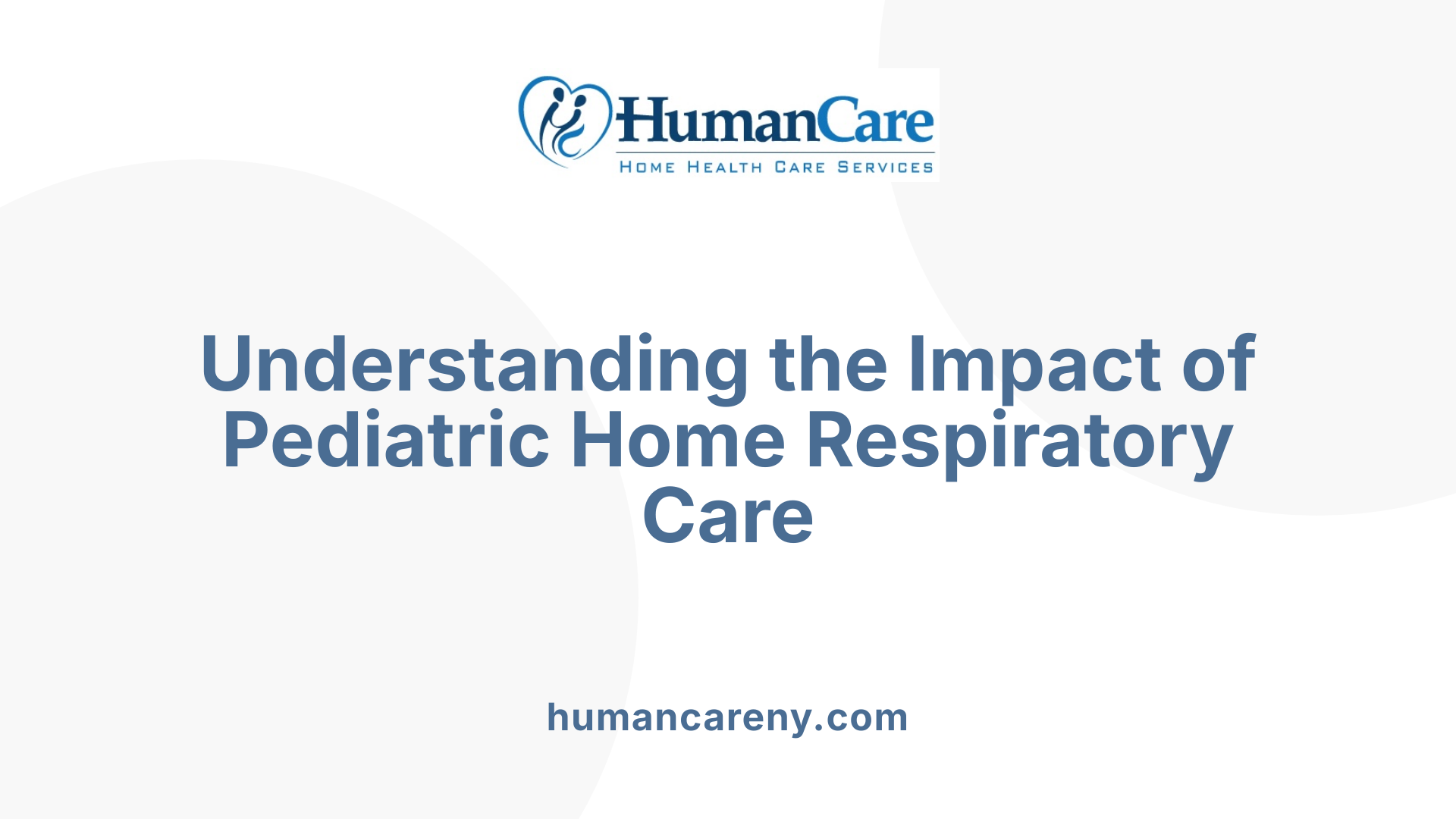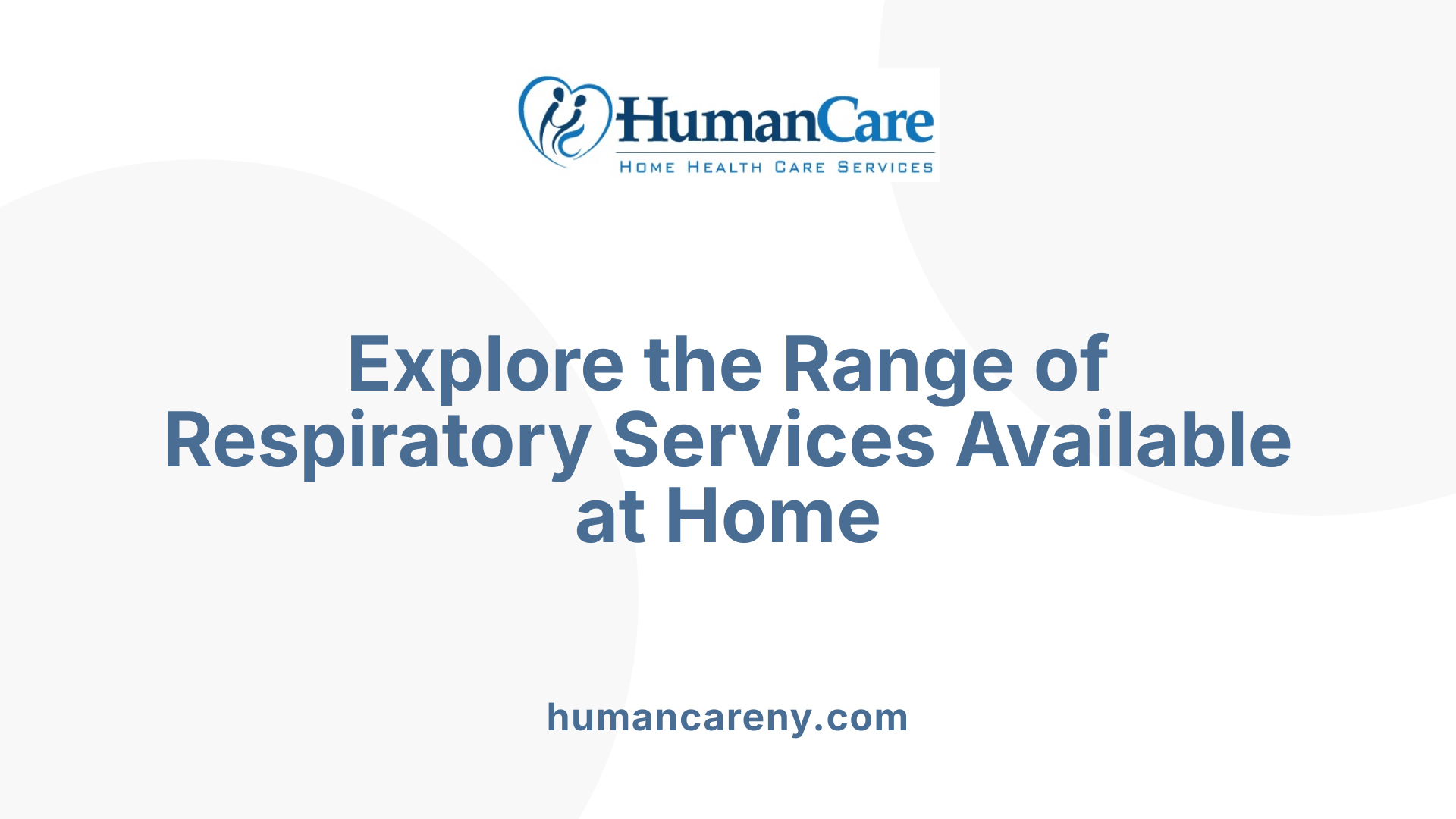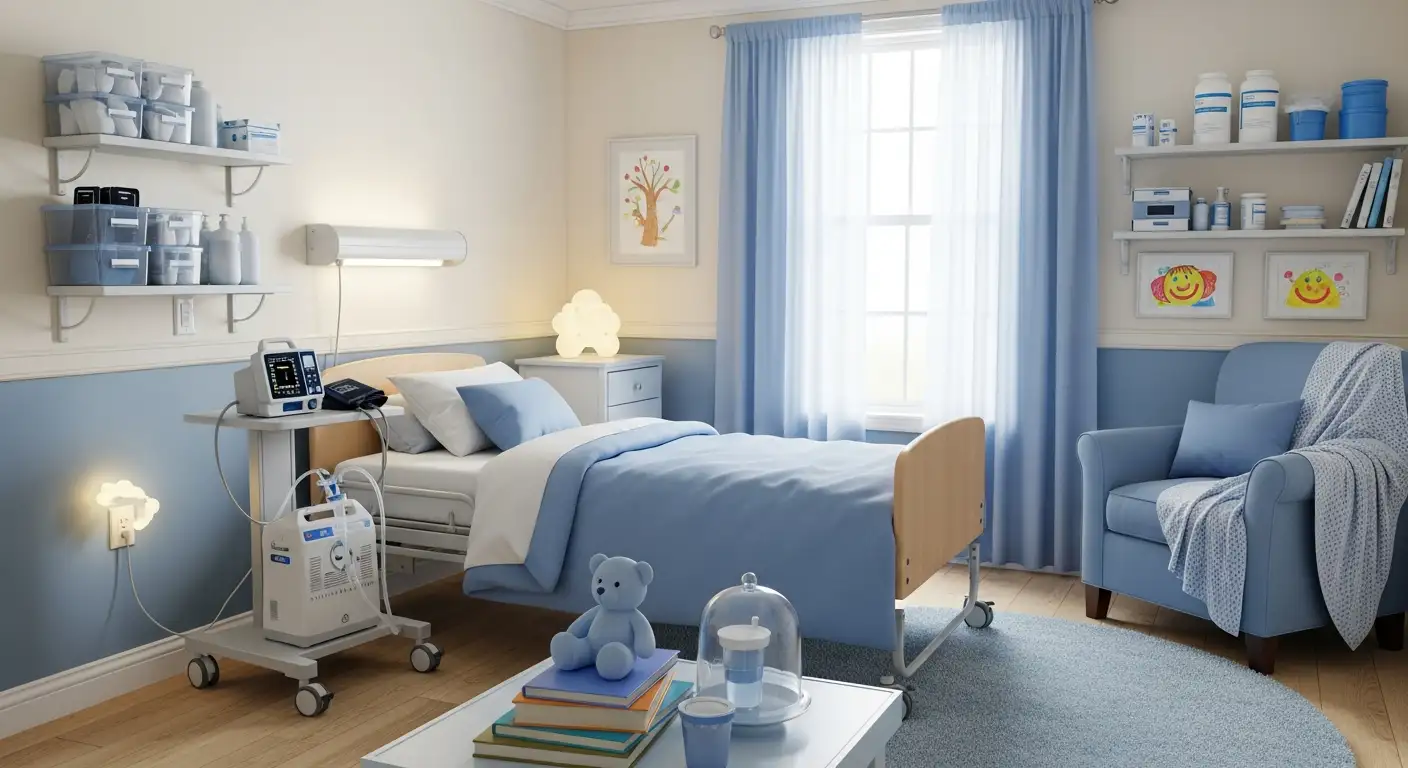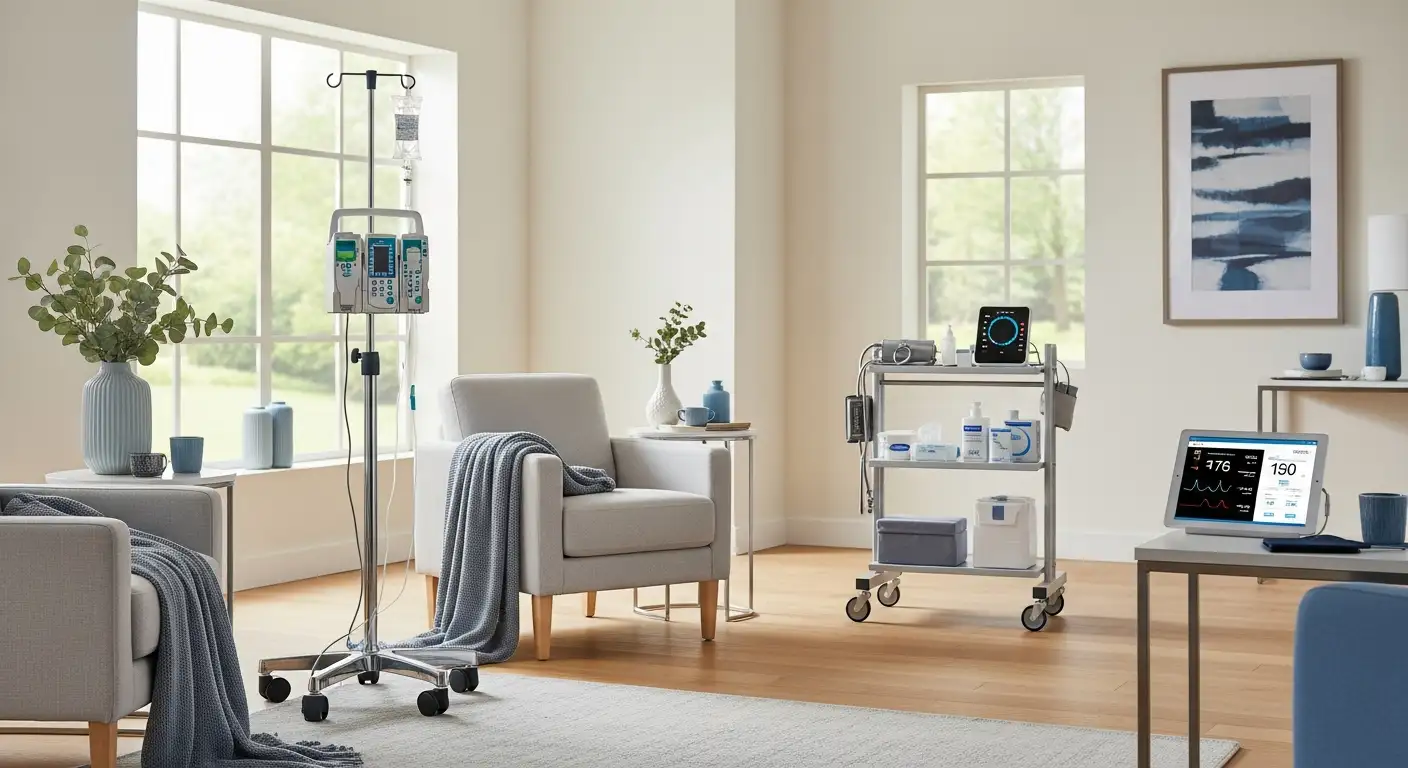Pediatric Home Care: A Vital Lifeline for Children with Respiratory Needs
Advancements in medical technology and specialized care models have revolutionized how children with respiratory and complex medical conditions receive treatment. Pediatric home care now enables comprehensive respiratory therapies to be delivered effectively in the comfort of a child’s home, offering improved health outcomes, family-centered support, and reduced hospital stays. This article explores the multifaceted ways pediatric home care assists children requiring respiratory therapies and examines the collaborative roles, challenges, and benefits associated with this evolving field.
Scope and Significance of Pediatric Home Care for Respiratory Therapies

Types of respiratory conditions treated at home
Pediatric home care supports a range of respiratory conditions, including chronic pulmonary or respiratory illnesses, respiratory-compromised children, and those recently discharged from pediatric intensive care units (PICUs) with needs for ventilator support or tracheostomy care. Conditions such as asthma also benefit from home treatment through the use of nebulizers and environmental management to reduce flare-ups.
Medical technologies enabling home respiratory care
Advances in medical technology have revolutionized pediatric home care by enabling the safe use of equipment like ventilators, tracheostomy tubes, apnea monitors, and oxygen therapy devices in the home setting. These technologies, combined with professional support, facilitate comprehensive respiratory treatments without prolonged hospital stays.
Patient profiles benefiting from home respiratory support
Children who qualify for home respiratory care include premature infants requiring respiratory management after neonatal intensive care, those with congenital cardiac or neurological impairments affecting breathing, chronic pulmonary disease sufferers, and children with genetic or developmental disorders. Personalized care plans are tailored to these patients’ complex needs, improving their comfort and health outcomes within their home environment.
Medical Technologies Empowering In-Home Respiratory Care for Children
Use of ventilators, tracheostomies, and apnea monitors at home
Advancements in medical technology now allow children with severe respiratory needs to receive critical care at home. Ventilators support breathing for those unable to maintain adequate respiration independently, while tracheostomies provide a direct airway to assist children who require long-term respiratory support. Apnea monitors help detect breathing pauses, alerting caregivers promptly to potential emergencies. These devices, once confined to hospital settings, are now safely integrated into home care environments, promoting comfort and normalcy for pediatric patients.
Integration of gastrostomy for nutrition support in respiratory-compromised children
Children with respiratory compromise often face difficulties with oral feeding, making gastrostomy an essential intervention. Gastrostomy tubes deliver nutrition directly to the stomach, ensuring adequate nourishment without interfering with respiratory function. This integration aids in maintaining energy levels and growth, supporting overall health while managing complex respiratory conditions.
Equipment delivery and family training for medical devices
Effective home respiratory care depends not only on advanced equipment but also on comprehensive family education. Home health providers deliver and set up necessary medical devices—including ventilators, apnea monitors, and gastrostomy supplies—ensuring they function correctly in the home setting. Families receive extensive training on device operation, routine maintenance, emergency procedures, and troubleshooting, empowering them to confidently manage their child's complex needs and respond swiftly to any concerns.
Who Qualifies for Pediatric Respiratory Home Care?

Who Qualifies for Pediatric Respiratory Home Care?
Pediatric respiratory home care is designed for children with complex medical needs who require specialized respiratory support outside the hospital setting. A primary group benefiting from this care includes premature infants facing respiratory complications. These infants often need ongoing management of breathing difficulties and are supported at home to enhance their development and comfort.
Children with chronic respiratory illnesses also qualify for pediatric home respiratory care. These conditions can include chronic pulmonary issues or other respiratory challenges resulting from congenital or acquired health problems. Additionally, children with cardiac conditions or neurological impairments that affect breathing often require specialized respiratory support services tailored to their unique needs.
A significant subset includes infants and children recently discharged from the Pediatric Intensive Care Unit (PICU) who continue to need advanced respiratory interventions at home. This group often requires ventilator support or tracheostomy care, enabling them to transition safely from hospital to home while maintaining critical respiratory functions.
Overall, pediatric respiratory home care serves a diverse population, including premature infants, chronically ill children with respiratory or cardiac conditions, neurologically compromised patients, and those with recent acute care needs such as PICU discharge requiring ventilator or tracheostomy support. These children benefit from personalized respiratory management delivered within their home environment, enhancing comfort and recovery.
Roles and Responsibilities: The Pediatrician as Care Coordinator
How does the pediatrician lead care planning in pediatric home health care?
The pediatrician acts as the central leader in managing a child’s medical home, taking primary responsibility for developing and overseeing individualized care plans. These plans are tailored to the child’s specific medical and developmental needs, whether managing complex chronic conditions or supporting recovery from critical illnesses. By prescribing treatments and ordering necessary home health services, the pediatrician ensures that care is comprehensive and responsive.
How does the pediatrician coordinate care among healthcare providers and home care teams?
Coordinating a multidisciplinary team is a pivotal role of the pediatrician. They work closely with registered nurses, therapists (physical, occupational, speech), social workers, and home health aides to synchronize efforts. This collaboration guarantees that every aspect of the child's care—ranging from respiratory support to therapy interventions—is seamlessly integrated. The pediatrician also monitors the evolving needs of the child through ongoing assessments, adjusting care strategies in partnership with the home team.
How do pediatricians advocate for insurance coverage and write medical orders for home health services?
Pediatricians play an essential advocacy role, navigating insurance systems to secure coverage for vital home health services. They write accurate and comprehensive medical orders required for services such as nursing care, respiratory support, and specialized therapies. Additionally, pediatricians intervene on behalf of families to address insurance challenges and payment limitations, ensuring financial barriers do not impede access to quality care at home.
Together, these roles affirm the pediatrician as the indispensable care coordinator, driving medical management and fostering effective communication across all caregivers involved in pediatric home health.
Home Health Providers: Nurses, Therapists, and Aides in Respiratory Care
Registered nurses’ specialized respiratory care tasks
Registered nurses (RNs) in pediatric home health are essential for managing complex respiratory needs. They perform skilled tasks such as ventilator support, administering oxygen therapy, tracheostomy care, and respiratory assessments. These nurses are licensed professionals trained to handle critical medical procedures including medication administration and diagnostic testing related to respiratory conditions.
Role of respiratory therapists and rehabilitation specialists
Respiratory therapists and rehabilitation specialists support children’s breathing and overall respiratory health at home. They provide therapies like nebulizer treatments, monitor pulmonary function, and assist with equipment such as ventilators and apnea monitors. Rehabilitation specialists, including physical and occupational therapists, focus on improving lung capacity, mobility, and strength, aiding recovery from respiratory illnesses and surgeries.
Contributions of home health aides in daily and non-medical assistance
Home health aides complement medical care by providing non-medical daily support. They assist with vital sign monitoring, personal hygiene, mobility assistance, and wound care. While they do not perform specialized medical tasks, their role in ensuring comfort, safety, and adherence to care routines is crucial for children with respiratory challenges. They also offer companionship, which supports emotional well-being during treatments at home.
Comprehensive Respiratory Services Offered at Home

Tracheotomy Care and Ventilator Management
Children discharged from pediatric intensive care units requiring ongoing respiratory support often receive tracheotomy and ventilator management at home. Registered nurses skilled in pediatric care oversee the maintenance of tracheostomy tubes, ensuring airway patency and preventing infections. Families are thoroughly trained in emergency assessment and tracheostomy care to support their child's safety and well-being.
Medication Administration Including Infusion Therapies
Pediatric home health nurses administer medications critical for respiratory conditions, including intravenous infusion therapies such as antibiotics, hydration, chemotherapy, and pain management. This specialized care allows children to avoid prolonged hospital stays while receiving complex treatments tailored to their respiratory needs.
Oxygen Therapy and Asthma Management Protocols
Home health providers deliver oxygen therapy through portable equipment, which includes oxygen concentrators and apnea monitors. For children with chronic respiratory illnesses such as asthma, home care includes environmental assessments, use of nebulizers, peak flow meters, and family education to minimize flare-ups and optimize breathing.
These services combine to provide comprehensive respiratory care in a familiar environment, improving comfort, reducing hospital visits, and promoting faster recovery for children with chronic or severe respiratory conditions.
Family Education and Training: Empowering Parents in Respiratory Care
Training in Tracheostomy Care and Emergency Procedures
Parents of children requiring respiratory support at home receive comprehensive training in caring for tracheostomies. This includes cleaning, suctioning, and recognizing signs of complications. In addition, they learn critical emergency procedures such as assessing breathing difficulties and responding to airway blockages, ensuring they are prepared to act swiftly and confidently.
Guidance on Medication Management and Equipment Use
Families are educated on administering prescribed medications safely, including dosage schedules and handling side effects. They also receive hands-on instruction for operating medical equipment such as ventilators and apnea monitors, vital for effective respiratory support. This training helps parents manage their child's complex medical needs with accuracy and assurance.
Building Confidence for Ongoing Home-Based Treatment
Continuous support and education empower parents, reducing stress and anxiety associated with managing their child's condition. Through practical training and open communication with healthcare providers, parents build confidence in delivering high-quality care at home. This partnership fosters a stable environment conducive to the child's faster recovery and wellbeing.
Benefits of Pediatric Respiratory Home Care for Children and Families
How Does Pediatric Respiratory Home Care Reduce Hospital Stays and Infection Risks?
Home care for children requiring respiratory support, such as ventilators or tracheostomies, allows these children to receive treatments outside of a hospital setting. This significantly reduces their exposure to hospital-acquired infections. By carefully monitoring and managing respiratory needs at home, the frequency and length of hospitalizations decrease, minimizing the child's risk of infections and other complications.
How Does Home Care Improve Comfort and Speed Up Recovery?
Receiving respiratory care at home helps children feel more comfortable and secure in a familiar environment. The presence of family support reduces stress for both the child and caregivers. This supportive atmosphere promotes faster recovery compared to prolonged hospital stays. Personalized care plans tailored to each child's unique respiratory needs ensure effective management that adapts as conditions change.
How Is Schooling and Family Routine Less Disrupted Through Home Care?
Pediatric respiratory home care offers flexible scheduling, allowing children to maintain participation in school and daily activities. This helps preserve a sense of normalcy, which is crucial for their emotional well-being. Families benefit from reduced commuting times to hospitals or clinics, easing the burden on daily routines and reducing stress associated with frequent specialist visits.
Together, these benefits emphasize how modern pediatric respiratory home care supports children with complex medical needs by enhancing their health outcomes, comfort, and quality of life while easing family challenges.
Barriers to Optimal Pediatric Respiratory Home Care and Potential Solutions

Shortages of Skilled Providers and Rural Access Issues
A significant barrier to quality pediatric respiratory home care is the shortage of skilled healthcare providers. This scarcity is especially pronounced in rural areas, where families may struggle to find nurses, therapists, and aides trained in pediatric care. The limited workforce affects timely care delivery and places a greater burden on families.
Insurance Coverage Limitations and Payment Challenges
Many families also face challenges related to insurance coverage. Although Medicaid covers a considerable portion of pediatric home health services, payment rates are often low, which discourages providers from accepting certain cases. Additionally, restrictive policies and limited reimbursement options can complicate access to necessary home medical services.
Innovative Solutions Like Telehealth and Policy Reforms
To overcome these obstacles, innovative approaches are being explored. Telehealth has emerged as a valuable tool, allowing healthcare providers to remotely monitor and support children with respiratory needs, increasing access where in-person visits are difficult. Alongside technology, policymakers and organizations like the American Academy of Pediatrics advocate for reforms including clearer definitions of pediatric services and improved payment models to ensure sustainable, high-quality home care.
Careful implementation of these solutions can help mitigate workforce shortages, enhance insurance coverage, and ultimately improve outcomes for children reliant on respiratory support at home.
Government Programs Supporting Pediatric Respiratory Home Care Families
How Does Medicaid Support Pediatric Respiratory Home Care?
Medicaid plays a crucial role in supporting pediatric respiratory home care by providing comprehensive benefits that include nursing services, supplies, and various therapies. This extensive coverage allows children with chronic respiratory conditions to receive necessary medical care right in their home environment, significantly reducing hospital stays.
What Other Assistive Programs Are Available?
Beyond Medicaid, programs like Supplemental Security Income (SSI), Comprehensive Care Program (CCP), and Medical Day Care Program (MDCP) offer additional financial and service assistance. These programs help ease the financial burden on families, making it possible for children with complex medical needs to remain at home comfortably and safely.
How Do These Programs Enable Home Treatment?
These government initiatives collectively offer vital support by covering medical expenses, providing waiver programs, and assisting with service costs. This support ensures that families can access the skilled care and equipment necessary for conditions such as ventilator use or gastrostomy feeding, facilitating high-quality pediatric care outside hospital settings.
The combined impact of Medicaid and other government assistance programs is instrumental in empowering families to manage pediatric respiratory conditions at home, promoting better health outcomes and quality of life for children.
| Program Name | Type of Support | Detailed Benefits |
|---|---|---|
| Medicaid | Medical and Therapy Coverage | Nursing, supplies, therapy services, equipment provision |
| Supplemental Security Income (SSI) | Financial Assistance | Monthly income support for eligible children with disabilities |
| Comprehensive Care Program (CCP) | Waiver for Home Services | Allows access to specialized home health care beyond standard Medicaid |
| Medical Day Care Program (MDCP) | Service and Care Coordination | Offers daytime care and support services tailored for children's needs |
Integrating Therapies: Physical, Occupational, and Speech Support in Respiratory Care
How Does Physical Therapy Support Pediatric Respiratory Care?
Physical therapy plays an essential role in enhancing motor skills, strength, and balance for children managing respiratory challenges at home. This is particularly important for those recovering from surgery, injury, or genetic conditions affecting mobility. Strengthening muscles helps improve breathing efficacy and overall endurance, supporting better respiratory function.
What Role Does Occupational Therapy Play in Daily Living?
Occupational therapy focuses on developing the skills children need for daily activities and achieving milestones, especially vital for those with prematurity, feeding disorders, or genetic conditions. Therapists guide children in learning self-care tasks, fine motor skills, and adaptive techniques that promote independence despite respiratory limitations.
How Is Speech Therapy Integrated Into Care for Pediatric Respiratory Patients?
Speech therapy supports children who require assistance with feeding and communication, which can often be affected by respiratory issues or medical devices like tracheostomies. Therapists help improve swallowing safety and communication abilities, ensuring children can interact effectively and maintain adequate nutrition.
Benefits of Multidisciplinary Therapies in Home Care
The combined use of physical, occupational, and speech therapies creates a comprehensive support system tailored to each child’s unique respiratory needs. This integration promotes faster recovery, maintains developmental progress, and reduces hospital visits, while allowing children to remain in the comfort of their homes with family support.
Future Directions: Advancing Pediatric Respiratory Home Care through Technology and Policy

Emerging technology trends to enhance home monitoring
Advancements in medical technology continue to improve the quality of pediatric respiratory home care. Innovative home monitoring devices, such as integrated ventilator systems with remote access, apnea monitors with real-time alerts, and smart nebulizers, allow for continuous assessment of a child's respiratory status. These tools enable caregivers and healthcare providers to respond promptly to changes, reducing hospital readmissions and improving overall outcomes. Telehealth platforms also facilitate virtual consultations and remote monitoring, providing families with immediate professional support without leaving home.
Advocacy for adequate payment and clear service definitions
Financial coverage remains a significant barrier to comprehensive pediatric home health services. Advocacy efforts by organizations like the American Academy of Pediatrics emphasize the necessity for policy reforms that establish clear definitions of pediatric home health services and ensure adequate reimbursement rates. Medicaid coverage, a vital source of funding, often suffers from low payment issues that limit provider availability and service scope. Strengthening insurance policies will help expand access to essential services like respiratory support, tracheostomy care, and medication administration.
Expanding workforce through training programs and telehealth
Addressing the shortage of skilled pediatric home health providers, especially in rural areas, is critical for sustaining and growing home care programs. Developing specialized training programs for registered nurses, therapists, and home health aides ensures competency in delivering pediatric respiratory care. Telehealth solutions augment workforce capacity by enabling remote supervision, consultation, and education, reducing geographic barriers. Combined, these strategies promise to enhance service delivery and ensure children with complex respiratory needs receive consistent, high-quality care in their homes.
The Vital Impact and Future of Pediatric Respiratory Home Care
Pediatric home care for respiratory therapies represents a compassionate, effective, and evolving approach to managing complex childhood illnesses. By leveraging advanced medical technologies, a trusted care team, and empowered families, home respiratory care provides children with the stability, comfort, and specialized treatment they need to thrive outside hospital walls. Overcoming challenges related to workforce shortages and insurance will require coordinated policy efforts and innovative solutions. As technology and health care models advance, pediatric home respiratory care has the potential to further transform outcomes and quality of life for children and families nationwide.



